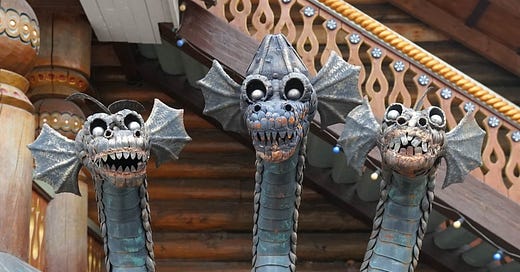The crisis in Yemen has become a sort of backdrop to the 21st century. Never in history has such terror, misery and suffering been enacted with such impunity on such a large scale. Both the Houthis and their adversaries firmly hold onto their respective territories and are at a standstill since the start of the siege on Marib in early 2021. The complexities of the conflict are enormous, but there is perhaps one man whose life can serve as a map tying transnational militancy to the devolution of Arab states.
In the early 1960s, the British believed that by forming the Federation of South Arabia they could contain local nationalist and leftist sentiments by replacing colonial rule with tribal tyranny. One of these coastal sultanates, the al-Fadhli, was forced to flee to Lebanon then Saudi Arabia in 1967 when the National Liberation Front ousted what it saw as both foreign and domestic oppressors. Tariq al-Fadhli was born that same year, heir apparent to his father’s historical sultanate and exiled by Yemenis who dreamed of a new kind of future.
In 1987, Tariq joined thousands of Saudis and other Arabs to fight the Soviets in Afghanistan. There he meets a soft-spoken Saudi financier by name of bin Laden, whose ancestral home was also in Yemen. He trained under him at the al-Farouk camp and choose a life of transnational militancy. In 1989 the Soviets not only retreat, but fall into complete degeneration; the Arab Mujahideen are convinced that they themselves brought a world superpower to its knees and decide to go global. Tariq al-Fadhli’s eyes are set on his father’s sultanate, the largest tribal confederation in a crumbling southern Yemen.
Concurrently, in 1987 the southern People’s Democratic Republic of Yemen had been devastated by a civil war and with the fall of the USSR it could no longer support itself. Its leaders signed to merge with Saleh’s northern Yemen Arab Republic to form the Republic of Yemen in 1990. Ali Abdullah Saleh had consolidated his rule by allying himself to tribal rule and Saudi Wahhabis. As a result, the Yemeni Socialist Party was sidelined by the ruling GPC party and the Salafi Islah party who declared the new constitution would be based in Islamic Law. Interpretation of Islamic law (jurisprudence) was to be conducted by Wahhabis who made up a significant part of Islah’s electorate. It was not long before religious affiliation became a tenant of state power, crystallised in descriptions of the socialists as “atheist open to righteous killing”.
The ex-PDRY leaders rebelled in a conflict that would last until 1994. Saleh used many ‘Arab Mujahideen’ who were returning from Afghanistan, including Tariq al-Fadhli, to fight the socialists. In this time, Tariq also becomes the leader of Islamic Jihad Yemen who carry out a string of attacks including two Aden hotels in 1992. In 1994 he effectively dismantles the organization as he is rewarded with some land and a high-ranking position within the GPC. For the next few years Tariq keeps a low profile and forges strong relations between local southern tribes, strongmen and international jihad. It is also during these years that he marries one of his sisters to Ali Mohsen al-Ahmar, Yemen’s most powerful military general.
In 2010 as Ali Abdullah Saleh’s government crumbles Tariq joins the Southern Movement, an umbrella organization fighting for southern Yemen. Since the unification process, the ex-PDRY territories felt ignored by the northern central government. The PDRY had been so successful at removing tribal rule that the absence of a strong state left a vacuum filled by the next strongest force, Salafi militancy. The Southern Movement was made up of a rag tag alliance of socialists, secessionists, and international terrorists. The movement has since become the Southern Transitional Council and benefits from UAE-backing.
Tariq during this time, uses the chaos in Yemen to open training camps in the southern governate of Abyan and allies himself to Ansar al-Sharia, an ill-defined group that insists it is not a branch of al Qaeda despite evidence to the contrary. In 2012 he is stripped of his status as Sheikh after being accused of facilitating the entry of al Qaeda into the areas of Ja’ar and Zinjibar. Tariq insists that this a government machination and that he enjoys plenty of support in Ja’ar, although conceding he is not as popular in Zinjibar. If he is indeed accepted locally as the legitimate sheikh of Abyan that would make him the chieftain of Abdrabbuh Mansour Hadi, who was declared president with the ousting of Saleh in 2012.
In 2014 he publicly declares that he has ‘rejoined’ al Qaeda, since then he has spent his time talking to journalists, rehabilitating himself as a politician and mediator. Officially he is on house arrest in Aden, but his multiple appearances on social media suggests otherwise. The last confirmed trace I could find of him alive is in 2018, where he claims to have been the go-between al Qaeda and the US State Department.
Tariq al-Fadhli has become somewhat of a legend in his own right. Although a jihadist, journalists do not write of him with the same revulsion as al-Baghdadi or mysticism as bin-Laden. A New York Times article describes him as a “hero jihadist”, a possible “mediator” and a “hereditary sultan”. Tariq puts on a different hat depending on who he is seducing. To Saleh he was a ferocious fighter who quelled a threatening rebellion, to al Qaeda he is an precious representative and tribal mediator, to the Southern Movement he is a strong military strategist, and to western media he is a whimsical, novelesque conciliator. Ali Abdullah Saleh once described Yemen as “dancing on the head of snakes”— in this analogy Tariq al-Fadhli is like a Hydra, refusing to die no matter what head you cut off.

